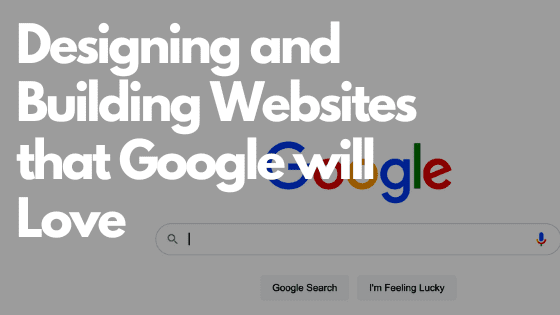If you’ve designed or developed a website, you will want it to be found on Google (as well as other search engines). In 1997, Google began to dominate the search engine market, now officially 85% market share. We find it is about 90% Google traffic to our sites in the UK.
Google’s search engine ranking systems are made up of a series of algorithms (rules), and Google doesn’t publish the rules on how they work. There are webmaster guidelines and good advice though. However, there has always been a consistent emphasis on websites that all users can visit and use easily.
A website has to look good and also needs good quality content. If you want to rank well on Google, you need to put thought into all aspects of your site, from what users can see to what’s going on in the background.

Content
Creating good content is standard advice, but how exactly can you define that? Especially when something like content quality can seem subjective. Let’s start with Google’s definition. Google’s search quality raters, whose job is to give Google feedback on their search algorithms, judge content quality by assessing its expertise, authoritativeness, and trustworthiness.
To create the kind of quality you want for your website visitors to see, you will need to do your research. Obviously, you’ll know what you’ll know in your head what to talk about but you need to put this into your website’s content to impress Google and your users. Don’t copy other website’s content – try to come across as ‘niche’ or ‘unique’. Also, including a few relevant keywords and phrases in your content will certainly improve its chances of ranking higher for certain search engine queries.
SEO
People often forget that SEO is more than just keyword research. Technical SEO refers to how you can optimise your site so that search engine crawlers can more effectively crawl, index and understand your site.
But what does any of that mean? Indexing is how your site makes it to Google. Crawling is performed by crawlers, special bots that go all over the internet to find new pages to add to their search engine. This is another important reason for having a good layout and proper internal linking. If your site doesn’t make sense, crawlers may not index all the pages on your site.
To make the crawlers’ job easier and ensure your site is indexed the way you want it to be, you should add an XML sitemap to your site. Every site we build has one.
An XML sitemap is a list of links and pages on your website. By creating one, you have a little more control over where the crawlers go, prioritizing and including what you think are the most important pages on your site. In addition, you can submit this sitemap directly to Google to speed up the process of getting crawlers on your page. We do this with Google Console for every site we host.
Make Sure It's Mobile-Friendly
This is also referred to as the sites responsiveness. Over half of the internet is browsed using phones or tablets – meaning that if your website isn’t responsive or basically doesn’t adjust to the device it’s viewed on, then you’ll lose that user as they won’t be impressed as they will have to zoom in or they’ll click on the wrong part, and they’ll leave the site. This is why Google predominantly use the mobile version of websites for ranking and indexing so not having a mobile site could impact your SEO.
You’ll be happy to know – Green Stripe Media take care of all of this for you!
